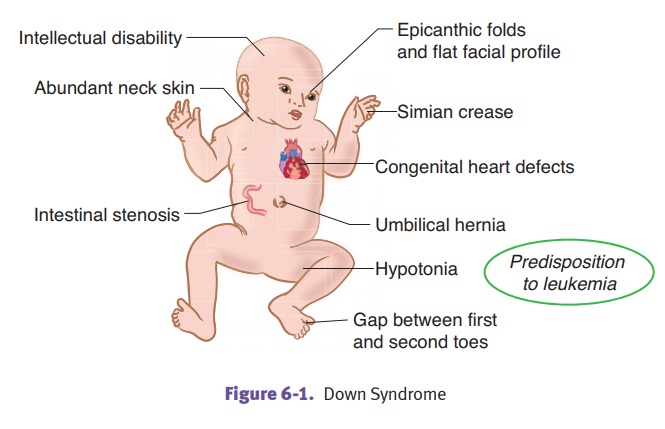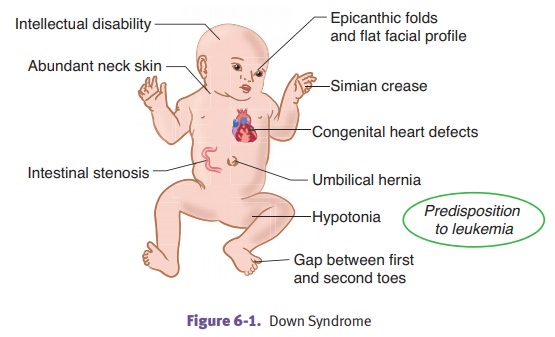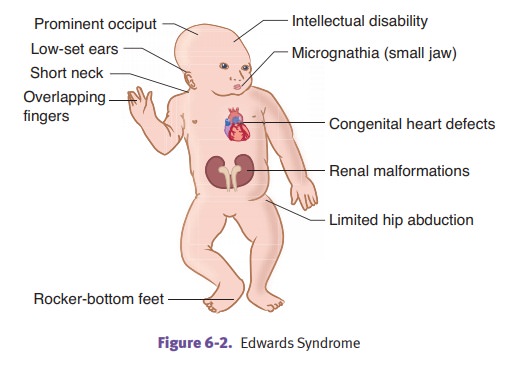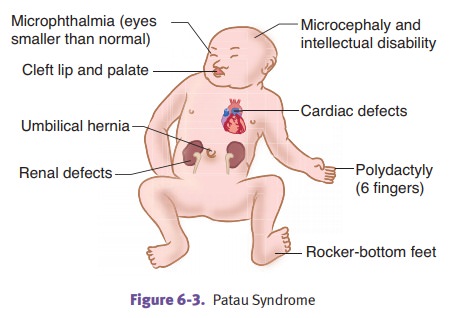Chapter: Pathology: Genetic Disorders
Disorders Involving an Extra Autosome

DISORDERS INVOLVING AN EXTRA AUTOSOME
Down
syndrome (trisomy 21).
The
most common karyotype is 47, XX,
+21. Down syndrome is the most com-mon
of the chromosomal disorders. The risk increases with maternal age to
anincidence of 1 in 25 live births in women age ≥45. The pathogenesis involves
meiotic nondisjunction (95%), Robertsonian translocation (4%), or mosaicism due
to mitotic nondisjunction during embryogenesis (1%).
Clinical findings can
include intellectual disability; mongoloid facial features (flatface,
low-bridged nose, and epicanthal folds); Brushfield spots (speckled appearance
of the iris); muscular hypotonia; broad short neck; palmar (simian) crease; and
congenital heart defects. Endocardial cushion defect, if present, leads to the
forma-tion of an atrioventricular canal (a common connection between all 4
chambers of the heart). Additional clinical problems that can develop include
duodenal atresia (“double-bubble” sign); Hirschsprung disease; increased risk
(15–20 fold) of acute lymphoblastic leukemia (ALL); and Alzheimer disease (by
age 40 virtually all will develop Alzheimer disease).
Prenatal
tests include maternal serum tests, ultrasonography, amniocentesis, and
chorionic villus sampling.
Median
life expectancy is 47 years.

Edwards
syndrome (trisomy 18) is caused by nondisjunction. The risk
increaseswith maternal age.
Clinical
findings can include intellectual disability; low- set ears and micrognathia;
congenital heart defects; overlapping flexed fingers; and rocker-bottom feet.
There is a very poor prognosis due to severe congenital malformations.

Patau
syndrome (trisomy 13) is caused by nondisjunction. The risk increases
withmaternal age.
Clinical
findings can include intellectual disability; cleft lip and/or palate; cardiac
defects; renal abnormalities; microcephaly; holoprosencephaly; and polydactyly.
The very poor prognosis is due to severe congenital malformations.

Related Topics